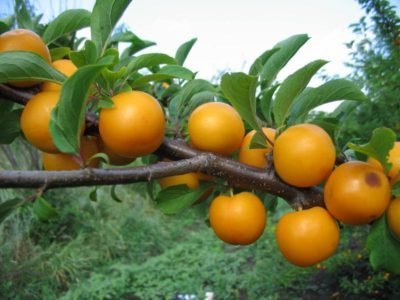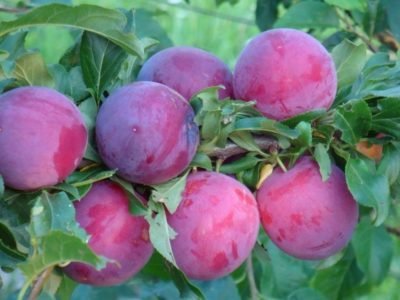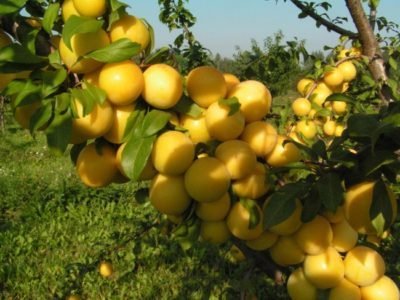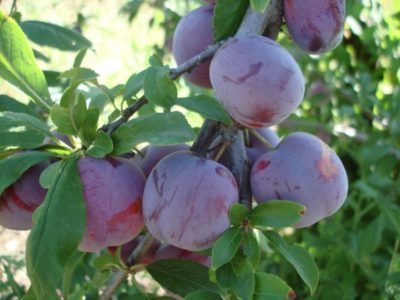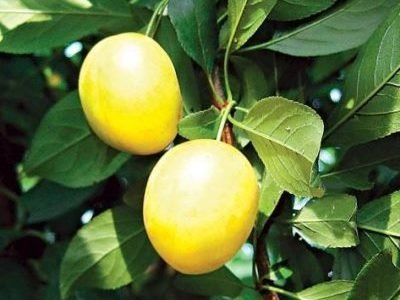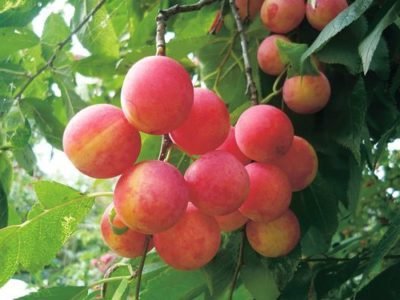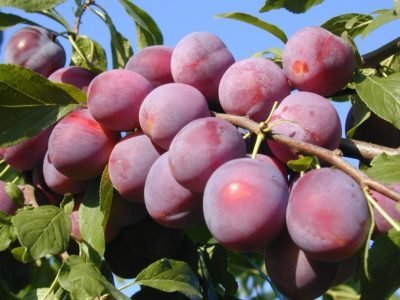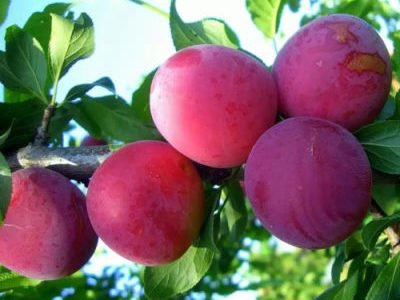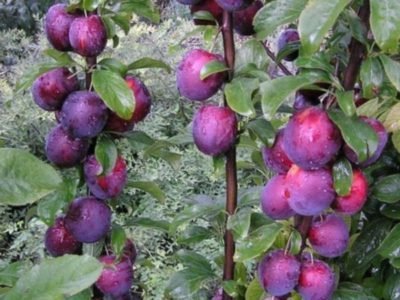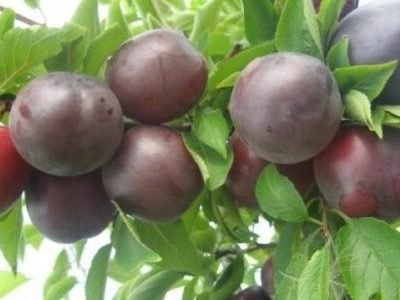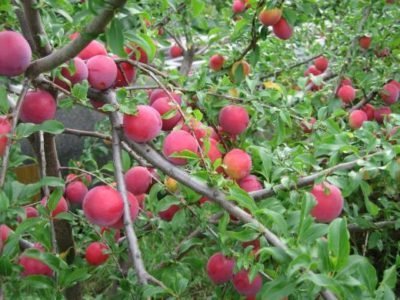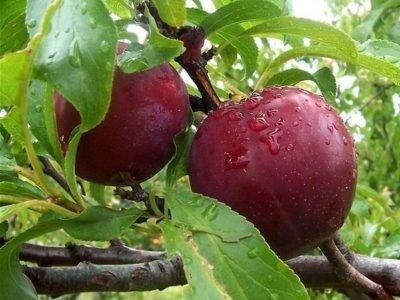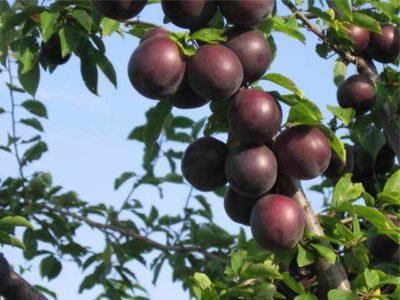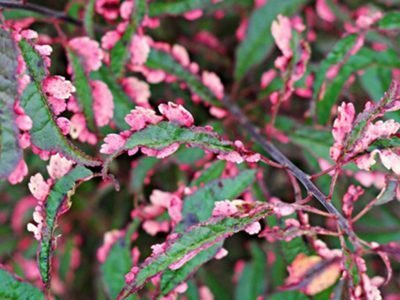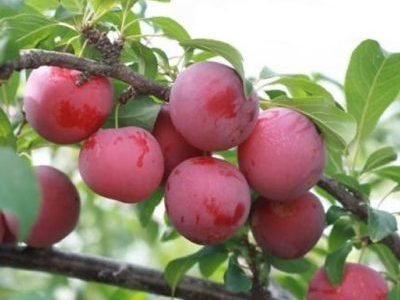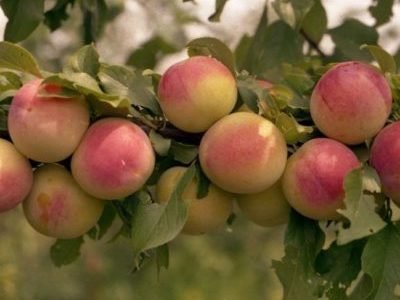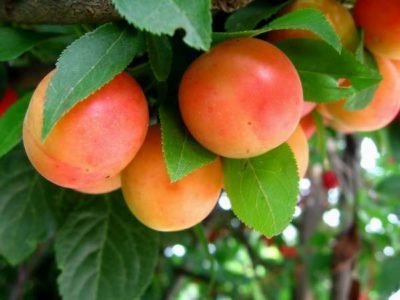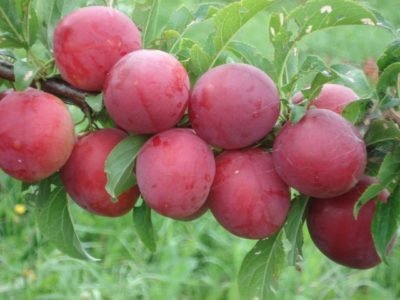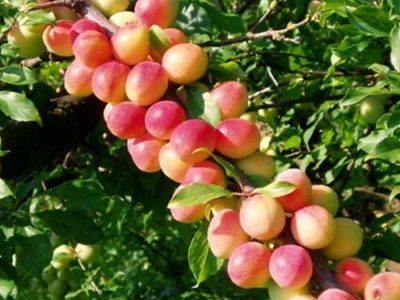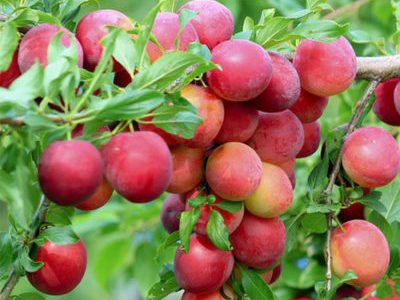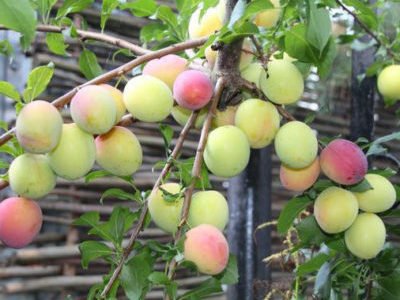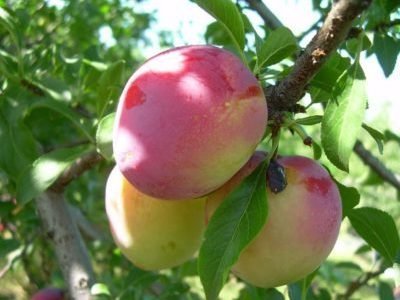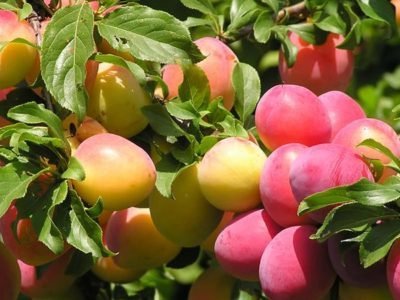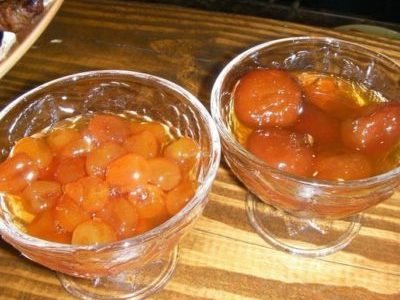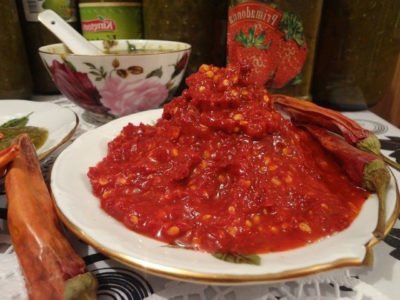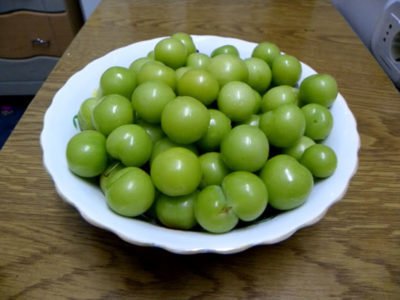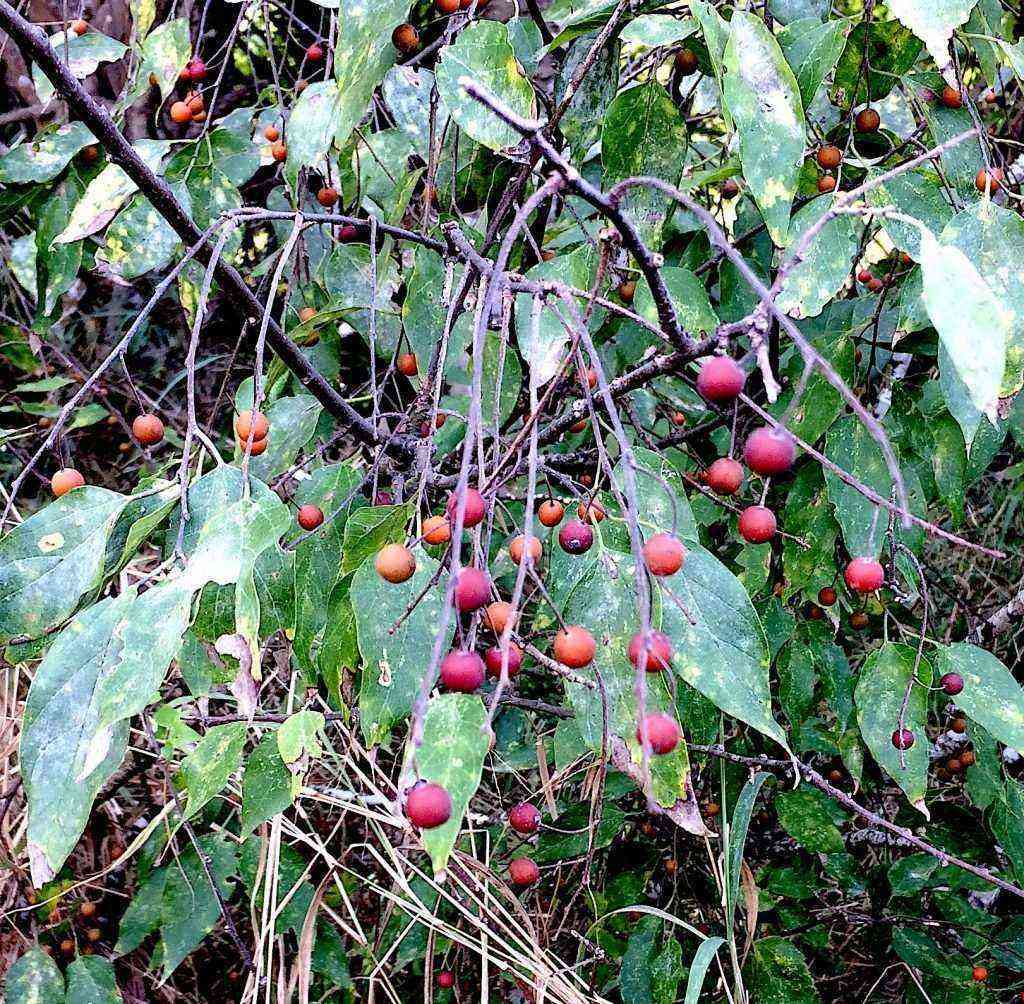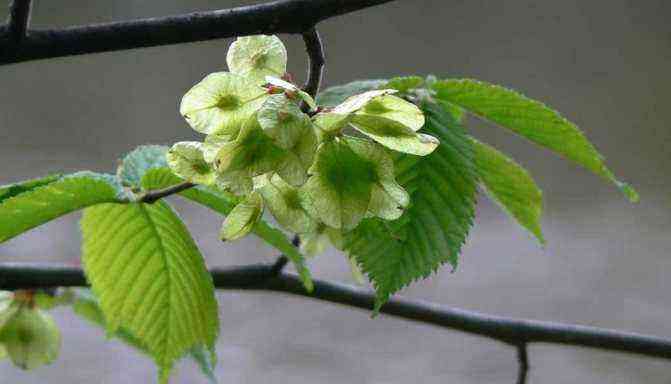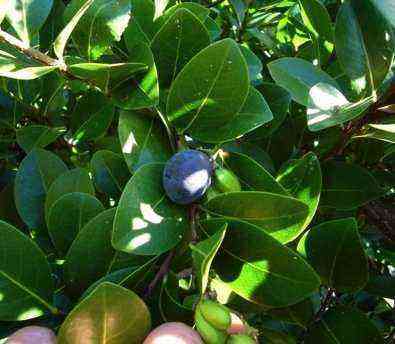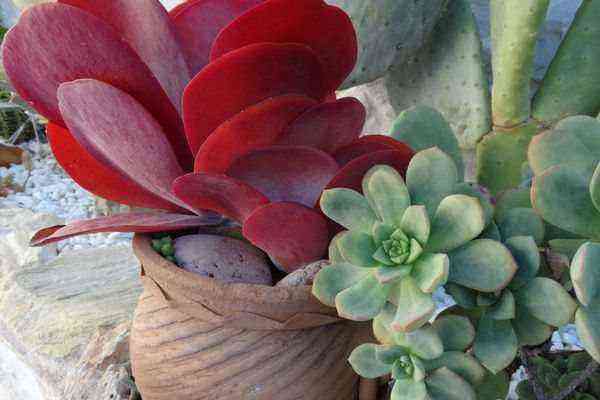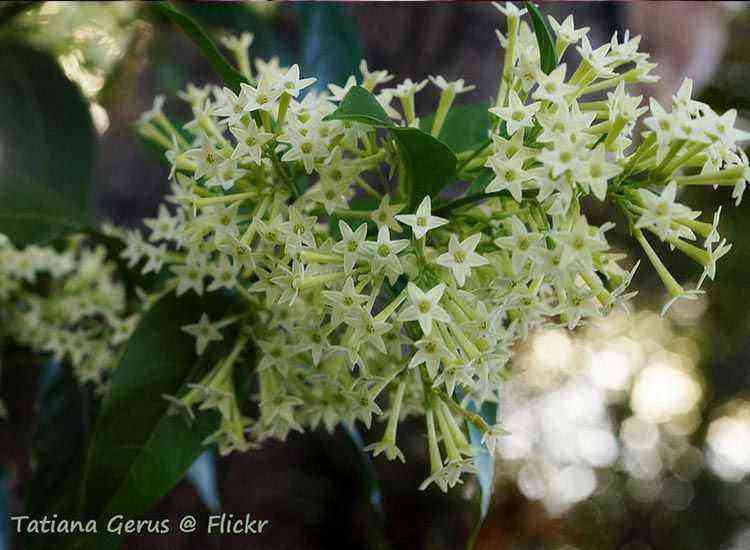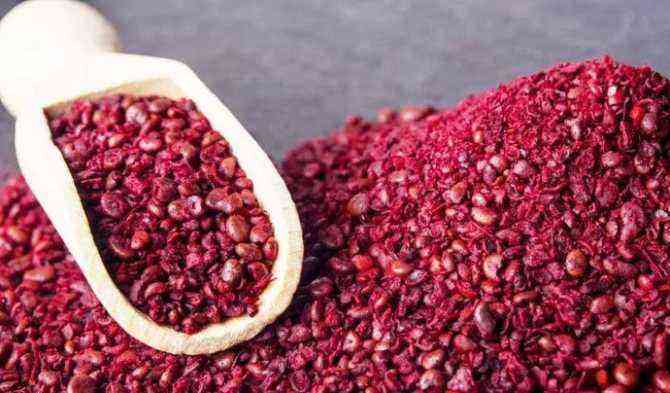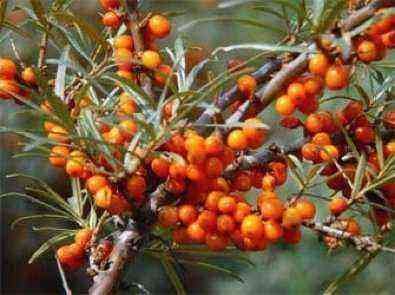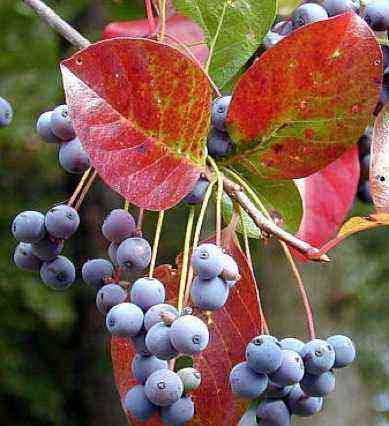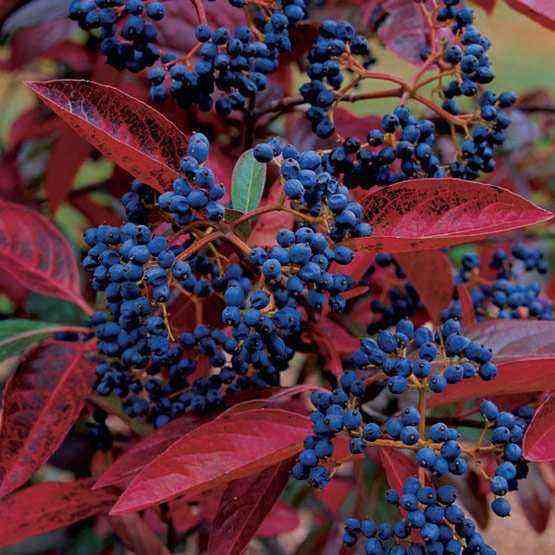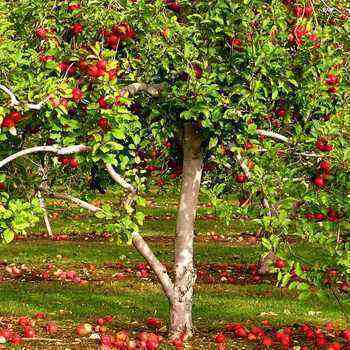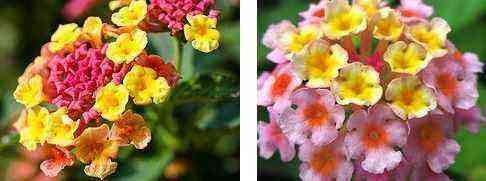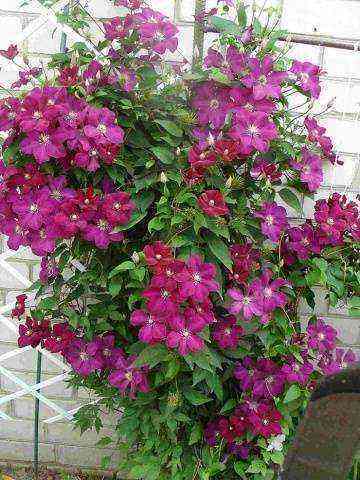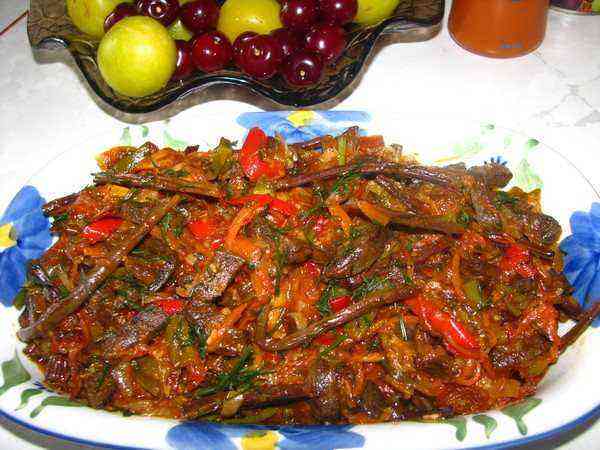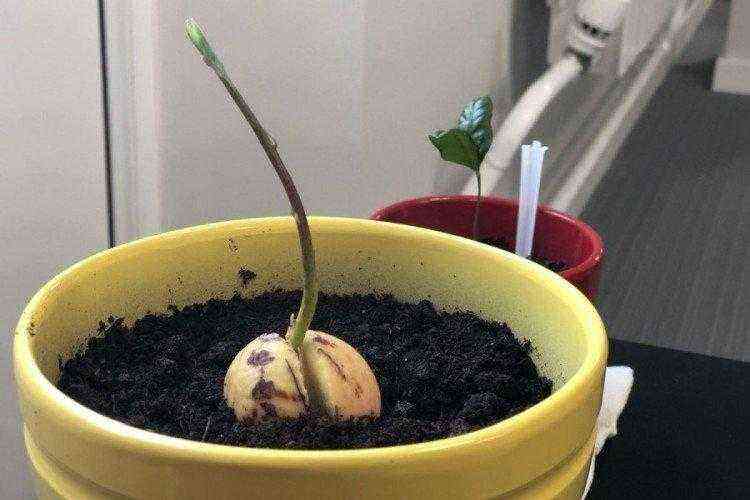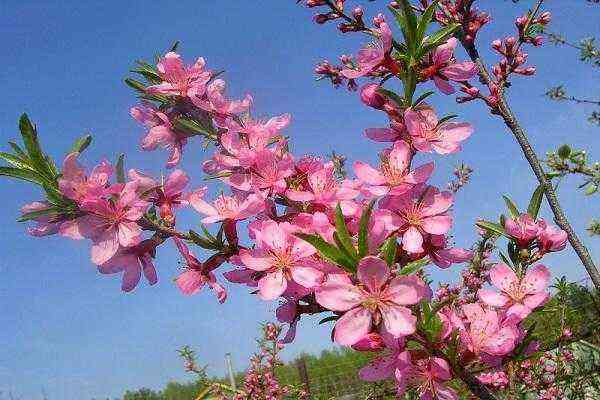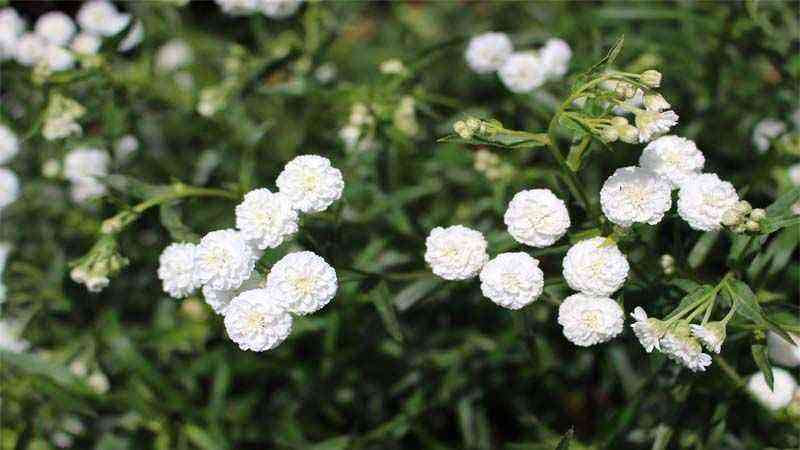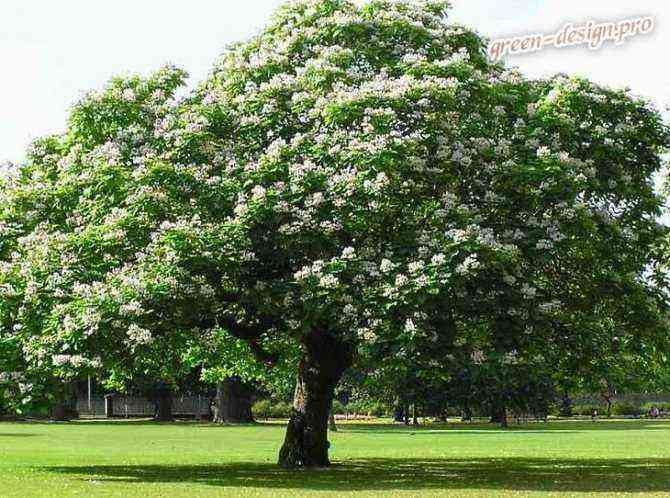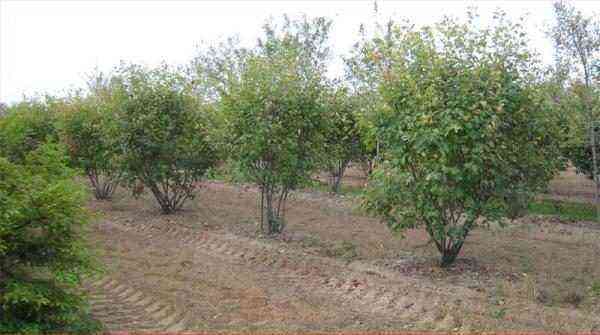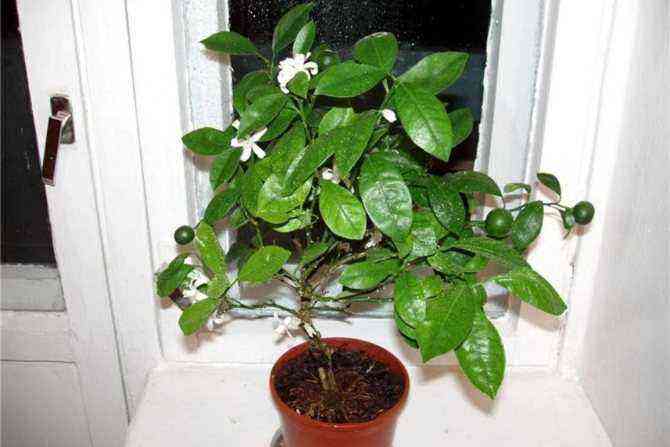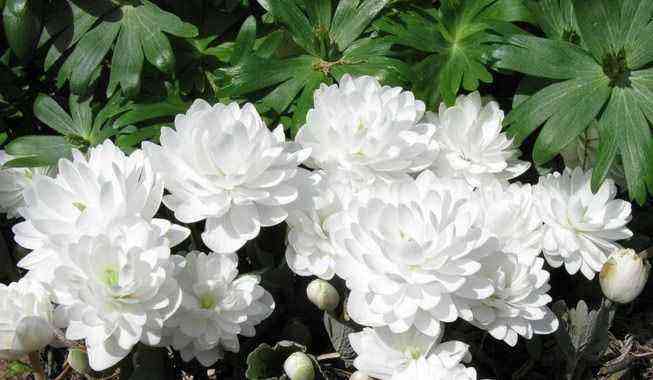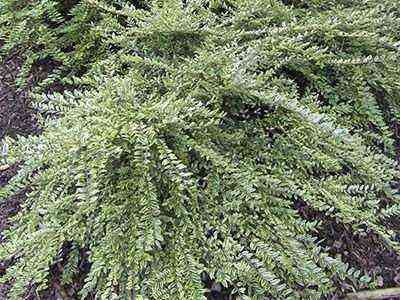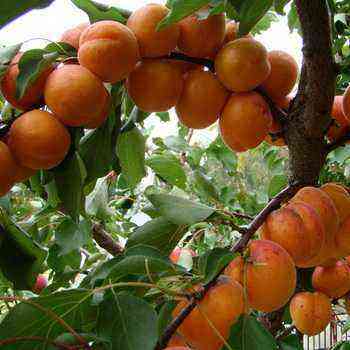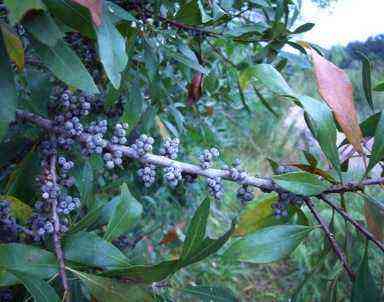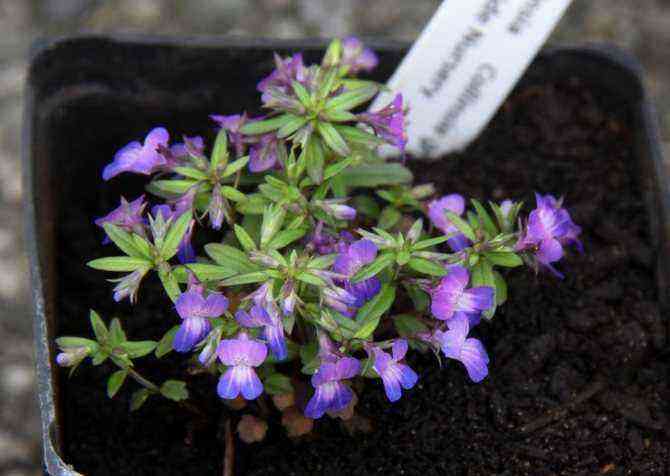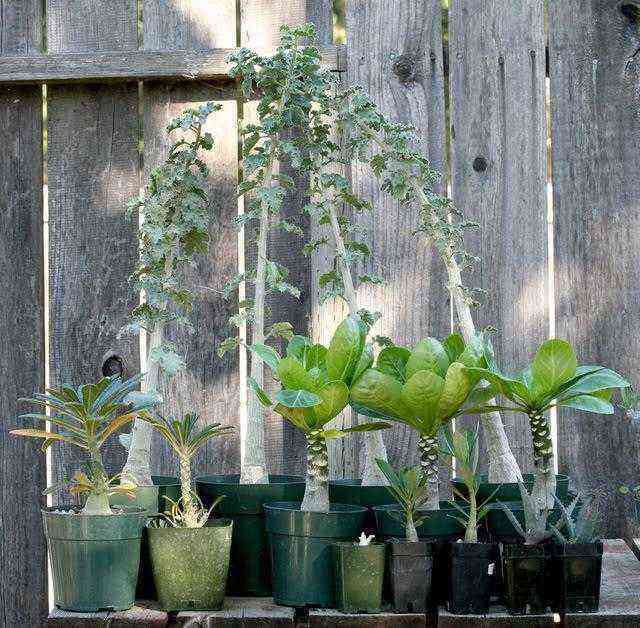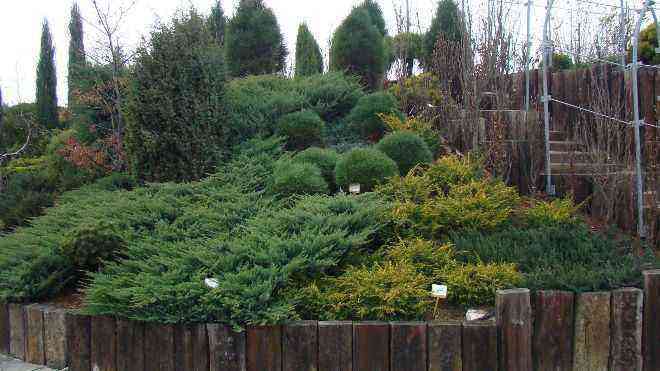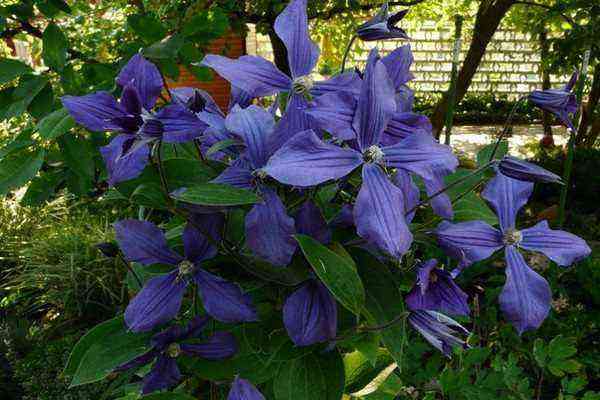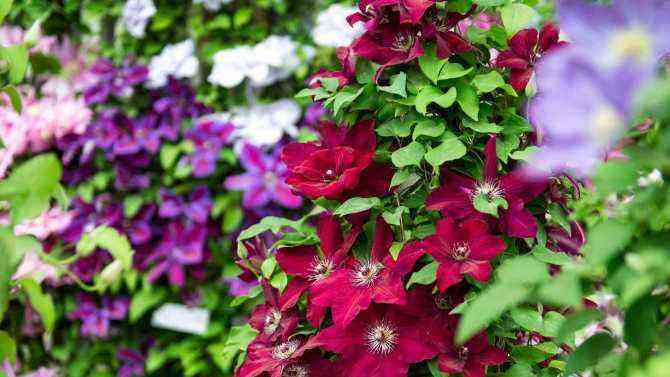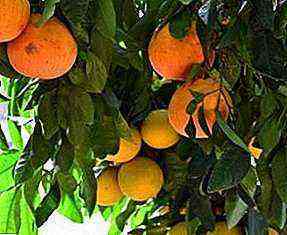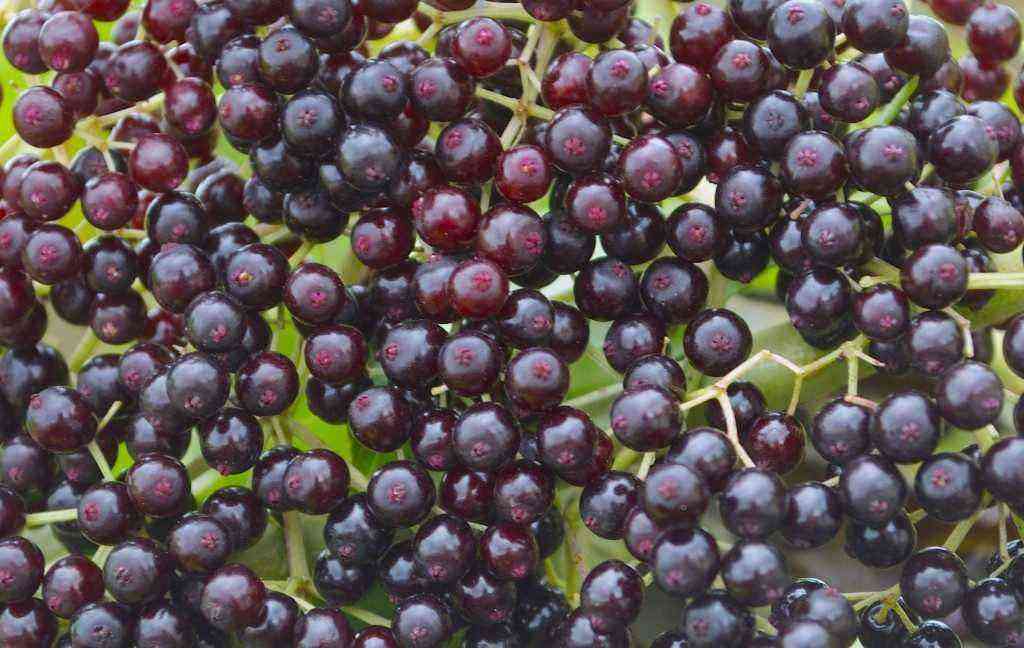The southern origin helps the cherry plum to easily endure drought and heat. When the plant got into the middle and northern latitudes of the country, it turned out that it does just as well in low temperatures.
Cherry plum not only quickly adapts to different climates, but also brings a rich harvest. One large tree can produce up to 150 kg of fruit per season. The plant begins to bear fruit abundantly two years after planting.
Cherry plum crosses easily with most other types of plums. This feature of the plant helps breeders to develop new varieties. There are now over 200 cultivars. They all differ in color, shape and size.
Cherry plum varieties for the middle strip
Cherry plum Kuban comet – a low-growing tree that grows up to three meters. This tree grows large red fruits the size of a hen’s egg – weight 40 grams. The Kuban comet brings a good harvest every year. Young varieties can be harvested up to 10 kg, and mature trees yield 50 kg of fruit. Plums ripen in mid-July.
Cherry plum Gold of the Scythians – early maturing tree, reaching two meters in height. This variety was bred from the seeds of the Kuban comet. It has the same large bright yellow fruits – weight 35 gr. An average yield tree gives up to 30 kg. The fruits ripen and are ready to be harvested at the end of June.
Cherry plum Abundant – mid-season tree, not exceeding two and a half meters in height. On short branches, many large sweet fruits with a dark purple color grow – weight 55 grams. Fruiting is abundant, every year it will be possible to harvest up to 60 kg of the crop. The fruits ripen in early July.
Cherry plum – the variety ripens quickly, reaches two and a half meters in height. The tree begins to bear fruit in the second year after planting. Small yellow fruits grow on spreading branches – weight up to 22 grams. Tsar’s cherry plum brings a stable and rich harvest of sweet-sour fruits. They sing at the end of June.
Cherry Huck
A mid-season variety that grows up to four meters. The tree begins to bear crops in the third year after planting. On the branches grow large yellow fruits with a purple blush – weight up to 30 grams. The tree bears fruit abundantly, yields up to 50 kg of sweet and sour fruits. Harvest is ready for harvest at the end of July.
Alycha Mara – ripens late, reaching up to three meters in height. The tree bears harvest two years after planting. Many medium-sized yellow fruits appear on the branches – weight 25 grams. Fruiting is stable, every year the tree bears up to 40 kg of sweet and sour fruits. The crop can be harvested at the end of August.
Cherry plum July rose – ripens early, grows up to three meters. The tree begins bearing fruit two years after planting. On the branches grow large sweet and sour fruits of dark red color – weight up to 35 grams. The yield is low, but stable. It will be possible to collect up to 10 kg of fruit from a tree. They ripen at the end of June.
Cherry Traveler – early maturing tree, reaching three meters in height. On the branches grow small fruits with a purple-pink tint – weight 25 grams. It bears fruit steadily, bringing up to 40 kg of plums every year. The crop can be harvested at the end of June.
Cherry plum Found – mid-season variety, reaching three meters in height. The first fruiting at the tree begins three years after planting. On the branches grow large sweet and sour fruits of dark red color – up to 35 grams. The variety brings abundant yields up to 60 kg. The fruits ripen in mid-July.
Cherry Lama – ripens late, grows up to two meters. Begins fruiting in the second year after planting. On the branches grow large sweet and sour fruits of red-brown color – weight up to 40 grams. This variety produces a good harvest. You can pick up to 60 kg of fruits from a tree. Ripening occurs in the second half of August.
Cherry plum Coloniform
A mid-season variety that grows up to two meters. The tree is ready for first fruiting three years after planting. On the branches, large fruits of red-purple color grow – weight up to 45 grams. This variety gives a bountiful harvest. It will be possible to collect up to 50 kg of sweet and juicy fruits from a tree. Ripening period – mid-August.
Cherry-plum Tent Is an early ripening variety that grows up to two meters. The first fruiting period occurs four years after planting. It has large sweet and sour fruits of red-yellow color – weight up to 35 grams. This variety brings up to 40 kg of harvest. The fruits begin to ripen in early June.
Cherry plum Peach – an early ripe variety that grows up to five meters. The tree bears its first harvest five years after planting. On the branches, large and sweet orange-red fruits grow – weighing up to 55 grams. From a tree, about 60 kg can be harvested per season. Fruits ripen in the first half of July.
Cherry plum Cleopatra – ripens late, reaches four meters in height. Brings harvest in the fourth year after planting. The fruits are large, dark purple, have a sweet and sour taste – weight up to 40 grams. This variety bears up to 40 kg of fruit every year. The harvest is ready for harvest in September.
Cherry plum Globus – a tall tree, resistant to cold snaps and any diseases. This variety bears the harvest at the end of August. The fruits are very large – some specimens weigh about 90 grams. If the harvest is rich, the weight of the fruit becomes less than 50-60 grams. They ripen by the end of August, acquiring a black and purple color.
Cherry plum red-leaved
The general name for varieties of plums that have red foliage. Among them there are large trees and medium-sized shrubs. It is used not only as a decorative garden decoration. Many species have large and sweet fruits. Red-leaved varieties are rarely affected by diseases and tolerate frost well.
Cherry plum Variegated – an ornamental tree variety that grows up to five meters. Spreading crown with dark purple shoots and foliage. It tolerates winter well and does not require special care. This variety bears large and juicy red fruits every year.
Alicha Nesmeyana – early ripening variety, growing up to six meters. Has a thin and spreading crown. The first crop gives in the fourth year after planting. Fruits are medium-sized, light red, weighing up to 30 grams. The crop can be harvested in early June.
Cherry plum General – mid-season variety, reaching six meters in height. Needs good insulation for the winter. On the branches, large fruits of red-purple color grow – weight up to 50 grams. The tree brings up to 30 kg of harvest. The fruits ripen in the second half of August.
Alycha Chuk Is a late-ripening variety that grows up to four meters. Begins to bear fruit in the fourth year after planting. Fruits are large, dark red – weight up to 30 grams. The yield is small, but stable up to 30 kg. You can harvest the fruits in early September.
Cherry plum planting and care in the middle lane
When choosing planting material, carefully examine the structure of the seedling. The trunk, shoots and leaves should not be damaged, wrinkled, stained or deformed. Also pay attention to the root, which should be white and at least ten centimeters long.
In the middle lane, cherry plum seedlings should be planted in early April. In autumn, this cannot be done otherwise they will not have time to take root before winter. Choose a sunny location with shallow groundwater. Observe the distance between seedlings, which should be at least four meters.
Dig a hole 60 cm deep and 70 cm wide. Put good soil in one place and clay in another. Add a bucket of turf, humus to the pit and mix everything with the ground. Make the depth so that the root collar of the tree is at ground level.
Drive two pegs opposite each other around the edges. They will perform the function of supporting the trunk. Plant a seedling in the middle of the hole, spread its roots and bury it with the remaining soil.
Then tie the plant to the stakes. While holding the seedling, lightly compact the soil around the trunk. After completing the planting, you need to shorten the main branches of the seedling and remove small shoots.
Plum is also grown for planting and care in the open field without any problems, if the rules of agricultural technology are followed. All the necessary recommendations can be found in this article.
Watering cherry plum
To water the plant, make a hole around the trunk. Water for the first time immediately after planting. Fill the hole with two buckets of water. Further watering is carried out every two weeks, thirty liters.
When autumn comes, it is necessary to carry out water-charging irrigation. Pour plenty of water over the plant in mid-September. This procedure will help the seedling better prepare for wintering.
Cherry plum feeding
If you added fertilizer to the planting hole, then you do not need to feed the tree in the first year. In subsequent years, for the development of cherry plum, fertilize the soil regularly. Apply nutrient mixes in spring, summer and fall.
In the spring: before flowering (second half of April), add potassium salt – 40 g and ammonium nitrate – 25 g to the soil. After flowering is complete (second half of May), prepare a mullein solution in a 1: 3 ratio and add 50 g of superphosphate to it per 10 liters of solution. The resulting composition is poured two liters per barrel.
Summer: in the first half of June, feed the tree with a urea solution in a ratio of 20 grams per 10 liters of water. Pour five liters of solution under one barrel.
Autumn: in mid-September, do the last top dressing to speed up leaf fall and prepare the tree for winter. To do this, make a groove around the tree and scatter the potassium chloride and double superphosphate over the surface, one tablespoon at a time. Cover the groove with earth and water well.
Cherry plum loves to grow in neutral acidic soils. If the acidity of your soil is too high, then you need to add lime or wood ash. Perform this procedure every five years.
Cherry plum pruning
Cherry plum grows rapidly, so it needs to be cut off every year. What does it do? Pruning forms the correct crown shape, helps to grow large and juicy fruits, and keeps the tree healthy. This procedure is carried out in spring and autumn.
Spring pruning is forming. During this period, it is necessary to shorten annual growths and remove branches that thicken the crown or have dried out.
Autumn pruning is sanitary. It begins when the tree sheds its leaves. Remove dry and diseased branches. If there are barren branches, they must also be removed.
Cherry plum blossom
Cherry plum begins to bloom in late April or early May. Flowers bloom before foliage. This beautiful sight lasts 8-11 days. The flowers have five petals, white or light pink.
The tree blooms with single flowers, but sometimes two umbrellas appear from the bud at once. Flowering is accompanied by a pleasant scent.
Cherry plum
Depending on the type of tree, cherry plum fruits appear at different times. The earliest ripen in early June, and the latest in September.
On the branches of cherry plum, large fruits weighing up to 60 grams and small ones up to 30 grams grow. They come in different shades: yellow, red, red-violet, black-violet. Their flesh is juicy and sweet-sour.
Cherry plum transplant
Cherry plum does not like being re-transplanted. But sometimes it needs to be done. Spring is the right time for this procedure. You can transplant for two reasons.
First: you planted a tree, but the place turned out to be bad – the seedling does not grow. In order not to destroy the plant, it must be carefully dug up and transplanted.
Second: you are breeding cherry plum from a bone. Your tree will grow and get stronger in a year. Then it can be transplanted to a permanent place.
Cherry plum in winter
This type of stone fruit perfectly tolerates cold and frost. Cherry plum is successfully grown in the middle lane, where frosts are down to -25 ° C and in the north, where the temperature drops to -30 ° C. To make it easier for the plant to survive such frosts, it needs to be prepared.
In mid-September, you should dig up the soil around the tree and water it abundantly (50-100 buckets). In October, whiten the trunk from the root collar to the first skeletal branch. Then insulate the root system with a layer of mulch 10 cm thick. To do this, use a mixture of humus and compost.
Reproduction of plum
Cutting – in the middle zone of our country, it is held at the end of June. Cut off the cuttings from the growth of the current year one centimeter below the buds. The length of the cuttings should be 12 cm. Leave the top two leaves and remove the rest.
Treat the bottom of the cut with a root growth stimulant. Plant the cuttings in a container filled with nutrient medium. The planting depth is 3 cm, and the distance between the cuttings is 8 cm.
Watch for moderate soil moisture. Cover the cuttings with foil and place the container in a warm place where the temperature is at least + 25 ° C. The roots will appear in a month and a half. Rooted cuttings need to be grown for one to two years.
Planting the bone – take the largest, ripe fruits and separate the seeds from the pulp. Rinse the seeds well and dry. Put them in a jar and put them in a dry place away from light.
Plant the seeds in open ground before the onset of frost. Maintain a seed spacing of 6 cm. Water well and lay a layer of sawdust or peat mulch on top.
The onset of frost and snowfall will provide stratification. In the spring, the seeds will sprout. After a year, you can transplant the seedlings to a permanent place or graft to other varieties.
Plumness diseases
Hole spot – in the first stage of the disease, brown spots appear on the leaves. Then the affected tissue falls off and holes appear. Such spots appear on fruits and branches. To heal the plant, remove all damaged leaves, fruits and branches. 14 days after flowering, treat the crown with Bordeaux liquid.
Moniliasis – the bark of the branches turns brown, becoming like those burnt by fire. The fruits rot and become covered with a gray bloom. The method of control is the physical removal of the affected branches and fruits. Then you need to treat the plant with Bordeaux liquid before and after flowering.
Sterility – cherry plums of the same variety grow in the garden, which cannot pollinate each other. For fruits to appear, other pollinating varieties are needed. The more varieties there are in the garden, the more stable the fruiting will be.
Cherry plum pests
Yellow cream sawfly – a small white caterpillar that penetrates the fruit and eats the bone and flesh. To kill the pest, treat the crown with Fufanon or Novaktion insecticides. Spray before and after flowering.
Oriental moth – a small caterpillar that eats away at the core of young shoots. It also feeds on the pulp of the fruit. To kill a pest, make a solution of table salt – 0,5 kg per 10 liters of water. Process the crown after flowering and harvesting.
Cherry plum useful properties and contraindications
Fruits contain many useful substances. Vitamins are contained in large quantities: A, E, C, PP, B1, B2. And also minerals: iron, phosphorus, magnesium, calcium. They lie in the refrigerator for a long time without losing their medicinal properties.
The fruits are recommended for use by children, pregnant women and the elderly. Regular intake relieves colds, vitamin deficiency, diseases of the stomach and intestines. It also strengthens the heart muscles and prevents the development of arrhythmias.
Despite its medicinal properties, cherry plum can be harmful to health. Eating large amounts of fruit in one sitting causes diarrhea, heartburn, and nausea. The level of glucose in the blood and acidity in the stomach increase, gastritis and ulcers are exacerbated.
Cherry plum tkemali
Ingredients:
- cherry plum – 1 kg;
- cilantro, mint, dill – 30 g each;
- hops-suneli, ground coriander – 1 tbsp. l .;
- chili pepper – 1 pc.;
- Garlic – 4 cloves;
- salt, sugar – to taste.
Preparation:
Rinse the fruit and transfer to a saucepan. Pour cherry plum with a glass of water and put on low heat. Boil the fruit for twenty minutes after boiling.
When the cherry plum is cooked, place a metal sieve over another saucepan. Push the fruit through it. The skin and bones should remain in the sieve. Add salt to the gruel – 1 tsp, sugar – 4 tbsp. l. Put on fire and bring to a boil.
Grate the garlic, peel the chili pepper from the seeds and chop finely, also finely chop the cilantro, mint and dill, prepare the hop-suneli seasoning and ground coriander. Add all these ingredients to the sauce and cook for ten minutes. Tkemali sauce is ready!
Cherry plum jam with seeds
Ingredients:
- cherry plum – 1 kg;
- sugar – 1,5 kg;
- water – 3 cups.
Preparation:
Rinse the fruit well and place in hot water for five minutes. While the fruit is steaming, prepare the syrup. To do this, take a saucepan, pour three cups of water into it and add one and a half kilograms of sugar. Stir well and bring to a boil.
Take out the steamed fruit and make cuts in each so that they are better saturated with syrup. Place them in hot syrup for four hours. When this time has passed, put the fruit with syrup on the fire and cook forty minutes. Simple jam is ready!
Adjika cherry plum for the winter
Ingredients:
- cilantro, green onions, parsley – 40 g each.
- cherry plum – 2 kg;
- coriander – 1 tbsp .;
- chili pepper – 3 pc.;
- garlic – 10 denticles;
- turmeric – 1 tsp .;
- sugar – 1 st. l .;
- salt – 4 tbsp l.
Preparation:
Rinse the cherry plum well, transfer to a saucepan and cover with water. Put on fire. After boiling, cook for ten minutes. After cooking, push the fruits through a sieve – remove the skin and bones.
The rest of the ingredients: chili pepper (peeled from seeds), spices, herbs, sugar, salt, garlic must be ground in a blender along with the fruit gruel. Put the resulting homogeneous mass on the fire for ten minutes. After cooling, the adjika can be rolled into jars for the winter.
Salted cherry plum like olives
Ingredients:
- unripe cherry plum – 1 kg;
- dried basil – 2 tsp;
- bay leaf – 6 leaves;
- inflorescences of dried cloves – 8 pcs.;
- vinegar 9% – 100 ml;
- salt – 100g;
- sugar – 50 gr.
Preparation:
Rinse the hearths well and fill them with hot water for five minutes. Prepare a jar while they are steaming. Pour seasonings at the bottom: basil, lavrushka, cloves. When cooking is over, place the fruit in a jar.
Now weld the fill. To do this, pour one liter of water into a saucepan and add salt and sugar. Mix thoroughly and cook over the fire. When the pouring boils, add the vinegar and remove the saucepan from the heat. Pour the cherry plum, sterilize for five minutes and close the jar.
Cherry plum wine at home
Ingredients:
- cherry plum – 3 kg;
- raisins – 150 gr;
- water – 4 l;
- sugar – 300 grams per liter of juice.
Take unwashed fruit and mash to make a gruel. The bones must remain intact. Cover with water, add raisins and stir. Cover the container with gauze and place in a dark place, where +25 ° C. Stir the floating pulp every day, melt.
After three days, fermentation will begin – hissing, foam and sour smell will appear. Strain the fermented juice into a large bottle, squeeze out the remaining pulp. Add 300 g sugar per liter of juice, mix thoroughly and put a rubber glove on the neck – pierce a hole in it. Transfer the bottle to a dark place with a temperature of +25 ° C.
Wait until the end of fermentation of the juice – in 20-50 days. You will understand this when the hissing stops, the sediment falls out and the glove deflates. Pour the juice through a straw into another bottle without sediment. The container must be filled to the brim so that the wort does not come into contact with oxygen. Close the bottle tightly and place in a cool place with a temperature of + 10 ° C. After three months, the wine will be ready.
